Non-conventional Mesomorphic Materials: Research 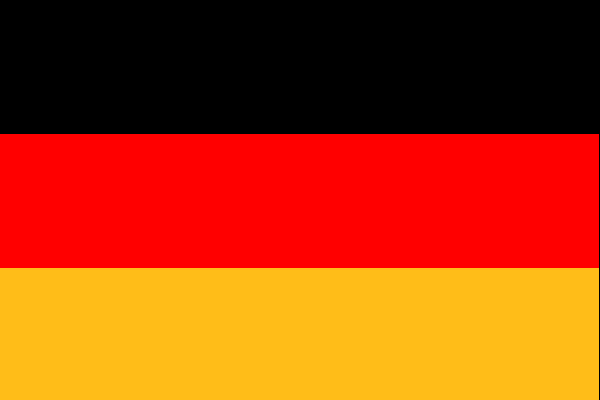
Introduction
Supramolecular Chemistry and Nanotechnplogy play recently an important role in materials science. Research is often inspired by efficient natural molecular assemblies. For example, the positions and orientations of chromophores in the protein matrix of the photosynthetic reaction centre are exactly defined. After irradiation of the supramolecular aggregates, the charges are separated effectively and are provided as source of energy for biochemical synthesis. The high efficiency of the process can be reached only by controlling the order of functional molecules. Such a control of the spacial organisation of molecules on the length scale of nanometers is of great importance and will lead in the future to the synthesis of tailer-made materials for new applications. The stacking of molecules is not realised by classical covalent bonds, but is moderated by non-covalent, weak interactions. These are van-der-Waals interactions, ionic interactions, multipol-interactions and also hydrogen bonding [1]. Beside these specific interactions, the nano-segregation plays an important role. The nano-segregation is based on the separation of physical and/or chemical different building blocks of a molecule, e.g. aromatic core and flexible side chains (Figure 1). [2] Only the correct molecular design results in self-aggregation and leads to the desired nano-structure.
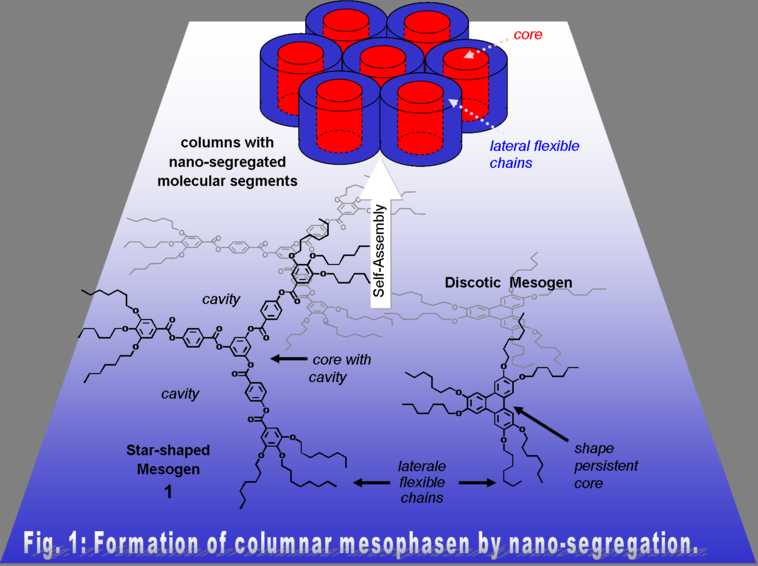
The Junior Professorship "Non-classical Synthetic Methods" is interested in the following research areas:
- Structural control of liquid crystalline phases (LC) build from star-shaped mesogens
- Nano-morphology of columnar LC phases.
- Morphology of composit materials made from kolumnar LC mesogens and nano particles.
- Combinatoric synthesis of segment libraries for the construction of tailor-made star-shaped molecules.
- Magnetic LC Materials.
- Synthesis of potential biaxial nematic mesogens and the investigation of their organisation in LC phases.
Besides synthesis and characterisation, the investigation of the materials properties occupy an important part of research. X-ray scattering , differential scanning calorimetry and polarised optical microscopy are employed to study the thermotropic behaviour and supramolecular order in the different phases. In some cases temperature-dependent UV-Vis-, fluorescence spectroscopy and solid-state NMR methods can give evidence for order in supramolecular assemblies.
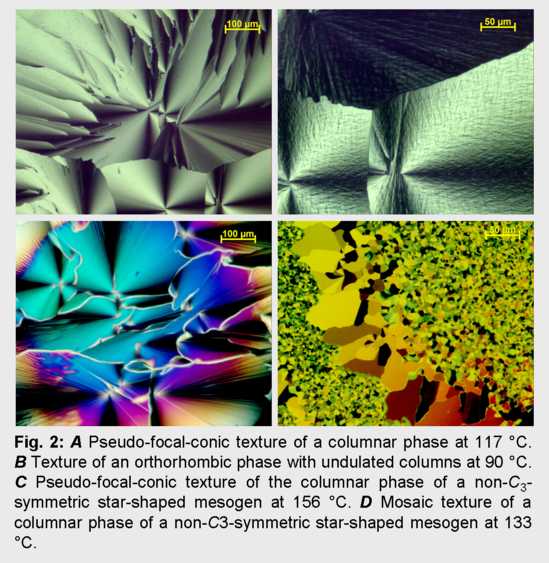
back to the top
Star-shaped mesogens for columnar LC phases
Linear oligobenzoate arms 4 with three peripheral aliphatic and perfluorated chains can be prepared stepwise with various substituents. They are coupled successively to phloroglucinol using protecting group chemistry in order to obtain symmetric and non-C3-symmetric mesogens 1. [3]
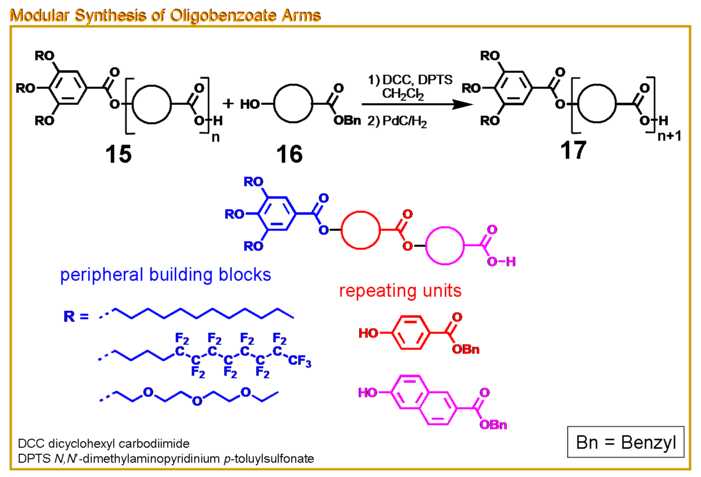
In the serie of symmetric mesogens, molecules with up to five benzoat units per arm were synthesised. The measured columnar diameters in their hexagonal columnar mesophases differ substantially from the molecular diameters of the star-shaped conformers. A comprehensive study revealed, that the self-organisation was guided by the optimisation of nano-segregation and space filling. This is possible owing to the folding of mesogens to E-shaped conformers, which led at lower temperatures two a helical packing of mesogens along a column (Abb. 3).[4] It will be investigated under which conditions the star-shaped conformation remain in the liqid crystal phase. Additionally, the spacial order of the different arms along the columnar axis is investigated. In principal, helical, antiparallel and cofacial structures may be obtained.
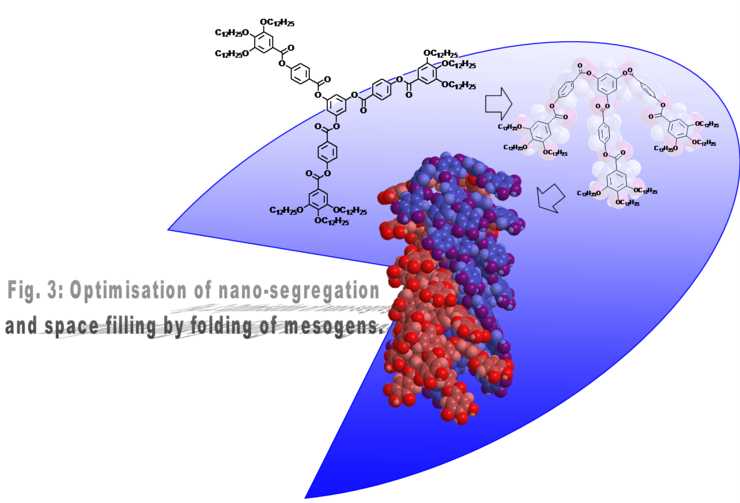
back to the top
Biaxiale Nematogens
In contrast to the columnar systems, the nano-segregation and crystallisation has to be prevented for the formation of biaxial nematic phases. The interactions should be dominated by the anisotropy of the molecular shape. The shape anisotropy of the V-shaped molecules 5-7 is controlled by the arm length and the bent core [5]
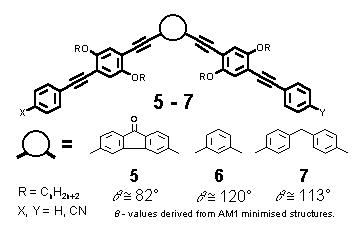 |
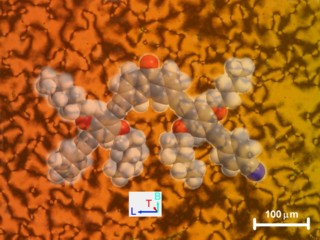
|
Selected references
-
R. I. Gearba, M. Lehmann, J. Levin,, D. A. Ivanov, M. H. J. Koch, J. Baberá, M. G. Dibije, J. Piris, Y. H. Geerts, "TAILORING DISCOTIC MESOPHASES WITH HYDROGEN BONDS", Adv. Mater. 2003, 15, 1614-1618. DOI: 10.1002/adma.200305137 .
-
M. Lehmann, R. I. Gearba, M. H. J. Koch, D. A. Ivanov, "SEMI-FLEXIBLE STAR-SHAPED MESOGENS AS NON-CONVENTIONAL COLUMNAR LIQUID CRYSTALS", Chem. Mater. 2004, 16, 374-376. DOI: 10.1021/cm034487x.
-
M. Lehmann, M. Jahr, "NEW ABC CORE FOR THE SYNTHESIS OF NONSYMMETRIC STAR MOLECULES", Org. Lett. 2006, 8, 721-723. DOI 10.1021/ol0528585.
-
M. Lehmann, M. Jahr, B. Donnio, R. Graf, S. Gemming, I. Popov, "STAR-SHAPED OLIGOBENZOATES: NON-CONVENTIONAL MESOGENS FORMING COLUMNAR HELICAL MESOPHASES", Chem. Eur. J. 2008,14, 3562-3576. DOI: 10.1002/chem.200700922.
-
M. Lehmann, M. Jahr, "PROGRAMMING STAR-MESOGENS TOWARDS THE FORMATION OF COLUMNAR OR CUBIC PHASES", Chem. Mater. 2008, 20, 5453-5456. DOI: 10.1021/cm8013094.
-
M. Lehmann,* M. Jahr, F. C. Grozema, R. D. Abellon, L. D. A. Siebbeles, M. Müller, "COLUMNAR MESOPHASES WITH 3D ORDER FROM NEW FUNCTIONAL NON-CONVENTIONAL STAR MESOGENS", Adv. Mater. 2008, 20, 4414-4418. DOI: 10.1002/adma.200800852
-
a) M. Lehmann, S.-W. Kang, Ch. Köhn, S. Haseloh, U. Kolb, D. Schollmeyer, Q. Wang, S. Kumar, "SHAPE-PERSISTENT V-SHAPED MESOGENS: FORMATION OF NEMATIC PHASES WITH BIAXIAL ORDER", J. Mater. Chem. 2006, 16, 4326-4334. DOI: 10.1039/b605718g.
b) M. Lehmann, Ch. Köhn, H. Kresse, Z. Vakhovskaya, "SYNTHESIS AND PROPERTIES OF OXADIAZOLE BASED V-SHAPED, SHAPE PERSISTENT NEMATOGENS", Chem. Comm. 2008, 1768-1770. DOI: 10.1039/b718348h.




